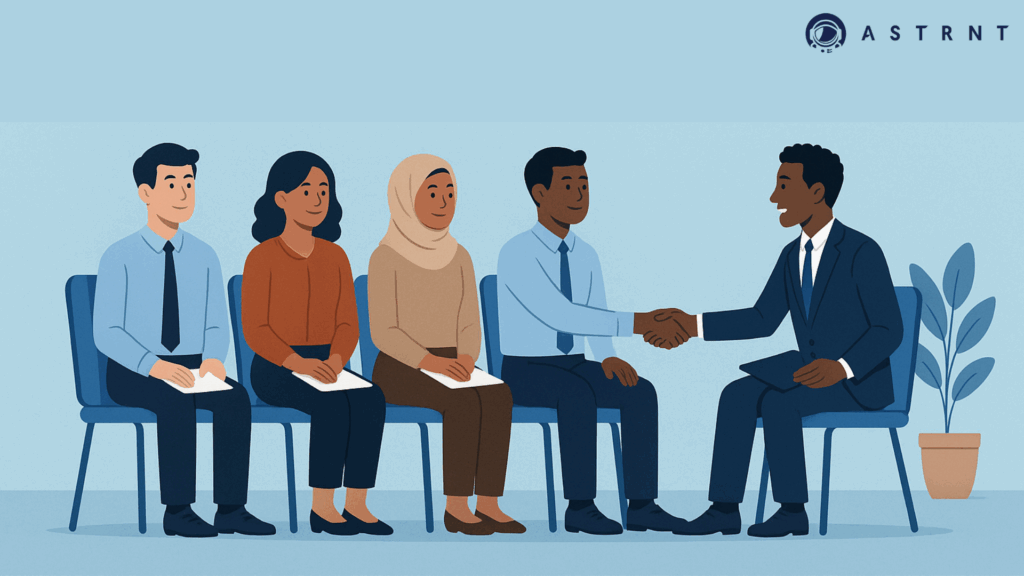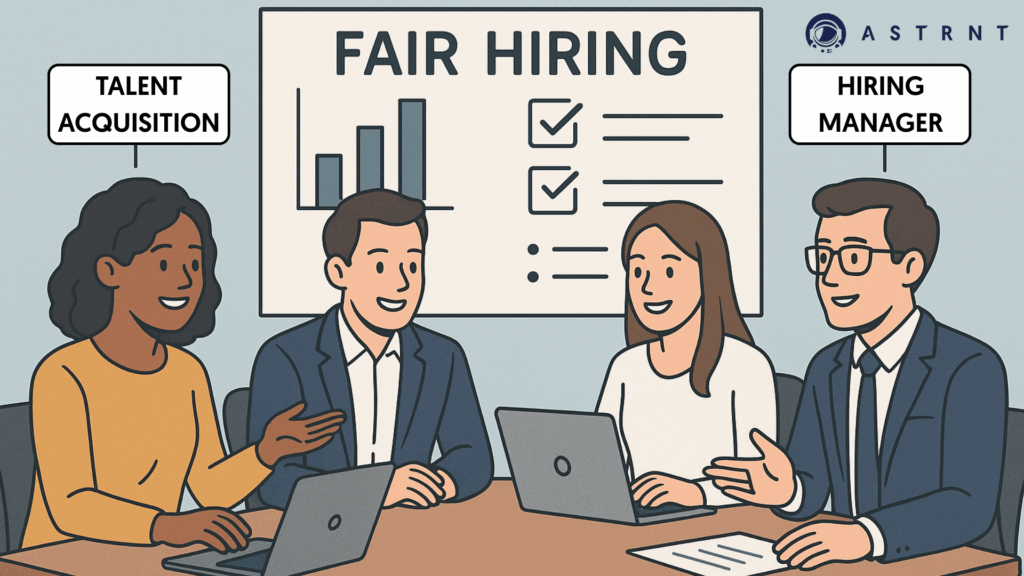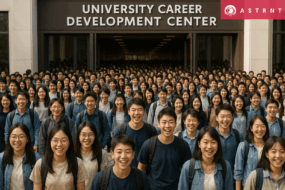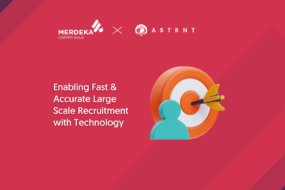
Author: Dira Tjokro | Editor: Intan Khatulistiwa
Why Does Unbiased Interview Still Feel Like a Slogan?
Have you ever walked out of an interview thinking, “That candidate felt right,” even though their qualifications didn’t quite line up? Or maybe you’ve seen two candidates receive wildly different interview experiences based on how “likable” they seemed. That’s interview bias in action, and it could be quietly damaging your hiring outcomes.
Interview bias isn’t always obvious. It can manifest as friendly small talk that affects how a candidate is evaluated. Or when interviewers give more leeway to someone from a familiar background. Left unchecked, these moments can lead to poor hiring decisions, missed potential, and a lack of diversity. In this guide, we’ll explore what interview bias is, how it relates to hiring bias, and how top companies eliminate it through structured systems and technology.
Interview Bias: Understanding the Basics Behind Unfair Hiring

Interview bias happens when interviewers let personal feelings, stereotypes, or unconscious preferences influence their evaluation of candidates. Interviewer bias specifically refers to the behaviors and decisions of the individual conducting the interview that contribute to this problem.
Ever caught yourself doing one of these during an interview?
- Affinity bias: Favoring candidates with shared interests, education, or background.
- Halo effect: Letting one positive attribute outweigh an otherwise mediocre performance.
- Confirmation bias: Asking questions that confirm existing assumptions about a candidate.
- First impression bias: Making snap judgments based on appearance or demeanor in the first few seconds.
Most of them aren’t deliberate. It often creeps in even when we believe we’re being fair. That’s why recognizing it is the critical first step toward better hiring.
How Top Companies Eliminate Interview Bias
The best-performing organizations don’t hope for fairness; they build it into every step of their hiring process.
1. Strengthening Talent Acquisition & Hiring Manager Collaboration with Ongoing Check-ins
Misalignment between Talent Acquisition (TA) and hiring managers can lead to interviewer bias, especially when there’s no clear, shared understanding of what a successful candidate looks like. Top-performing companies address this by holding mandatory alignment sessions before opening any role. During these sessions, the team agrees on must-have versus nice-to-have criteria, defines key competencies, and outlines how success in the role will be measured. This structured approach ensures everyone evaluates candidates against the same expectations, reducing the influence of personal judgment.
However, a single meeting isn’t enough to keep the process completely bias-free. Leading organizations take it further by implementing recurring hiring syncs throughout the hiring period. These regular check-ins serve as real-time calibration points to ensure alignment with objective criteria, flag potential bias before it affects decisions, and adapt to any evolving expectations.
They also reinforce accountability and structured decision-making. Once the role is filled, the meetings conclude, keeping collaboration sharp, purposeful, and focused only when hiring is actively underway.
2. Structured Assessments and Interviews
A major source of interview bias is inconsistency. One candidate might experience a relaxed, conversational interview, while another faces a tough line of questioning. This uneven approach opens the door to interviewer bias. Structured interviews help eliminate this by standardizing the process. Interviewers ask the same job-relevant questions, evaluate responses using clear scoring rubrics, and document the rationale behind each decision. This structure reduces subjectivity and ensures that every candidate is assessed on the same criteria, creating a fair and consistent experience across the board.
3. Data-Driven Decision Making
Bias thrives in unstructured, subjective hiring processes. That’s why leading companies base their hiring decisions on measurable elements, such as assessment results, interview performance aligned with predefined criteria, and clearly documented competencies. This approach doesn’t remove human judgment, but it does require that judgment to be supported by evidence.
Talent Acquisition teams play a crucial role in this process by challenging vague or biased feedback, like labeling someone as “not a good fit” and asking for concrete explanations. This is where talent management truly begins. When recruitment is objective and structured, it lays the groundwork for success throughout the entire employee lifecycle.
The Bigger Picture: How Interview Bias Fuels Hiring Bias

Zooming out, we see how interview bias contributes to hiring bias, a broader term that refers to unfair practices at any stage of the recruitment process.
For example:
- A candidate with a great resume is passed over after a short, awkward interview.
- An interviewer subconsciously asks more difficult questions to candidates from unfamiliar backgrounds.
- A lack of structured evaluation leads to decisions based on instinct rather than evidence.
These inconsistencies compromise fairness, undermine objectivity, and erode team performance. When hiring is based on a bias rather than objective data, companies not only miss out on top talent, but they also risk higher turnover and lower morale.
Stop letting bias cost you your best hires.
Take Control now!
The Role of Technology in Reducing Interview Bias

Technology alone can’t eliminate bias, but it enables companies to build consistent, scalable systems that do. Platforms like ASTRNT support this effort by helping organizations standardize interviews and assessments, automate scoring and feedback collection, and ensure alignment between Talent Acquisition and hiring managers through shared dashboards. Consider a scenario where Candidate A has an effortless, friendly conversation with the interviewer, while Candidate B faces a more formal tone and tougher questions. Without structure, these disparities go unnoticed, and bias takes over. But with a system like ASTRNT, inconsistencies are flagged and corrected early, promoting a fairer process for everyone.
From Interview Bias to Stronger Hiring Outcomes
Reducing interview bias and interviewer bias isn’t just about fairness; it’s a strategic move to boost performance. When hiring is structured and grounded in evidence, companies see tangible results. The entire process becomes faster and more efficient, with shorter hiring cycles and fewer delays.
New hires are more likely to stay, reducing early turnover and saving the cost of repeated recruitment. Teams become more cohesive because hiring decisions are based on fit for the role, not personal preference. Most importantly, both candidates and hiring managers report higher satisfaction, knowing the process was consistent, transparent, and focused on merit.
Of course, change isn’t easy. Even when Talent Acquisition teams understand the right steps, shifting away from traditional processes can be a real challenge. That’s exactly why tools like ASTRNT are built to make bias-aware hiring simple, scalable, and repeatable. ASTRNT empowers TA professionals to clearly define job requirements and align expectations with hiring managers early on.
It enables the creation of structured, role-specific assessments that reflect what success looks like in the role. During interviews, ASTRNT guides teams to use fair, job-based scoring frameworks that reduce subjectivity. And with centralized collaboration and feedback tools, the entire hiring team stays connected and accountable throughout the process.
Fair, fast, and consistent hiring with bias kept in check from start to finish.
Redefine Your Hiring Process with ASTRNT!
Interview bias isn’t just a hiring flaw, it’s a business risk. If you’re ready to move beyond good intentions and build a system that delivers consistent, fair, high-quality hires, ASTRNT is here to help.
Or if you want to see how ASTRNT helps you embed a hiring structure that sticks,
Related Article:
Video Interview Software









